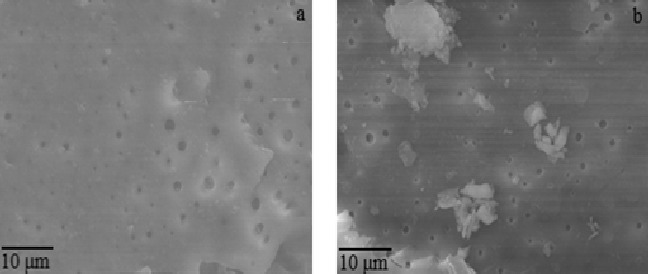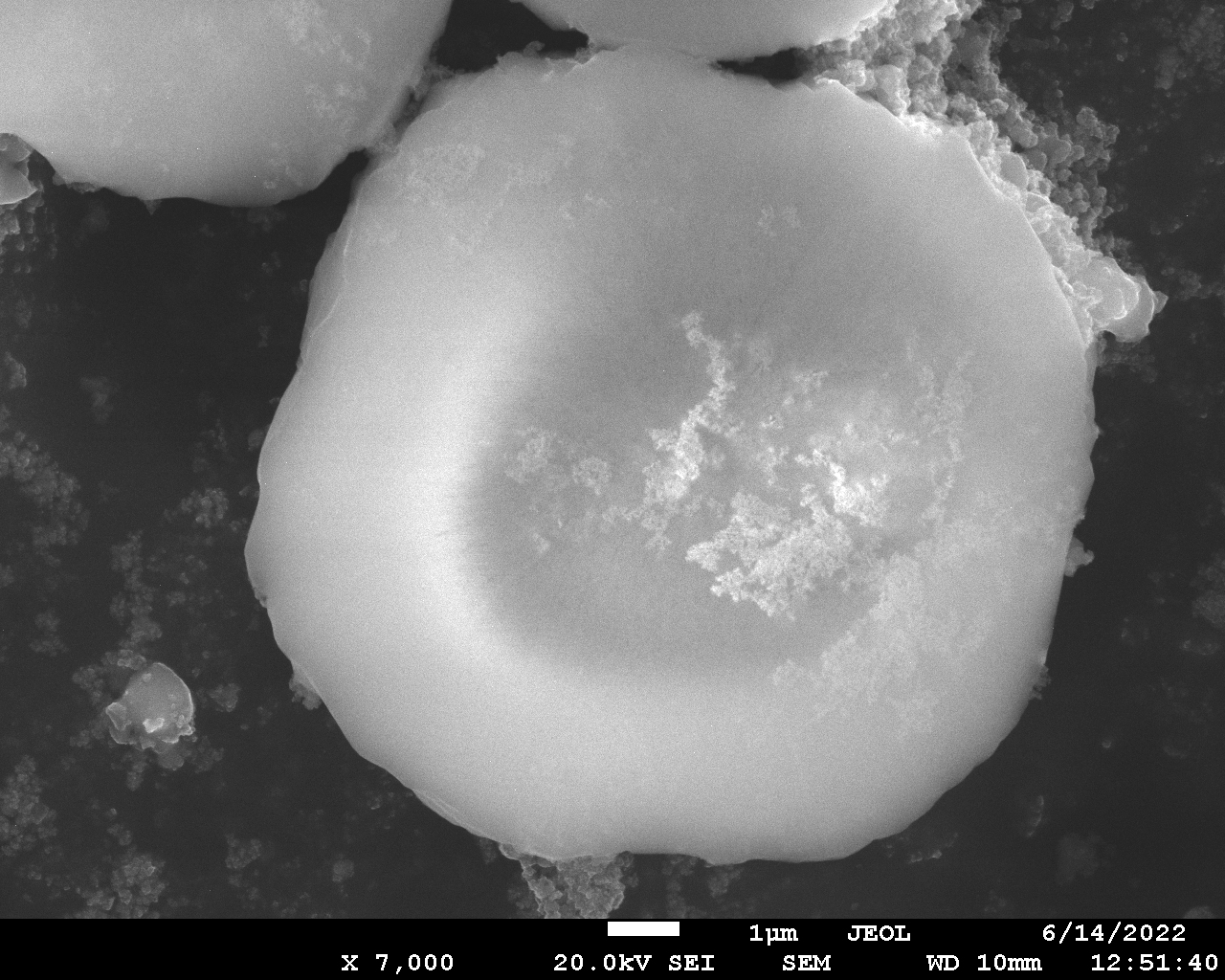The idea was suggested by nature itself.
“Plants purify the air by absorbing ultrafine dust through stomata located on the surface of leaves,” says Associate Professor of the Department of Ecology and Chemical Engineering of the SUSU Institute of Natural Sciences and Mathematics Tatiana Krupnova. “Stomata work like tiny pumps, providing gas exchange between the plant and the atmosphere. The team of the Laboratory for Studying Environmental Problems in Post-industrial Agglomerations, in the course of research supported by the Russian Science Foundation and the Government of the Chelyabinsk Region, showed that the accumulation of metals in tree leaves occurs precisely due to the absorption of ultrafine dust through stomata.”
.jpg)
Ultrafine airborne particles are often called PM10 and PM2.5. The subscript indicates to the particle diameter: no more than 10 microns and no more than 2.5 microns. There is a scale under the photo taken with an electron microscope. By using it we can see a particle stuck in the stomata in the size of about 5 microns. Simple dust. But what does it consist of? An X-ray fluorescence attachment helps to answer this question, as each element of the periodic table can be highlighted.

The composition of a dust particle includes calcium, carbon, oxygen, silicon, and aluminium. And this is totally fine: aluminosilicates and carbonates are commonly found in street dust. However, arsenic (As) and lead (Pb) cause greater concern. Therefore, it is so important to collect and remove leaves from lawns near enterprises in industrial cities, otherwise lead and other hazardous substances remain in the soil and, together with dust particles, can again clog the stomata of leaves and our lungs.
One of the trends of modern science is the use of nature-like technologies. Why not copy what nature has been creating over the centuries and what has been improving during evolution? And SUSU scientists mused on the question of creating coatings with pores absorbing micro- and nanoparticles, just like the stomata of leaves.
As the basis for such coatings, mesoporous spherical particles of titanium oxide were used. They were synthesized by chemists from the SUSU Department of Ecology and Chemical Engineering, who published an article about it in the Journal of Non-Crystalline Solids of the prestigious Elsevier publishing house.
Here is an illustration of what they look like under an electron microscope. These cute micro-sized balls are suitable to be used as a building material.

If you add them to potassium silicate or potassium liquid glass, it is possible to obtain porous coatings that retain particles of fine industrial dust. This discovery was published by Tatiana Krupnova and her colleagues in the Japanese International Journal of Geomate at the beginning of 2023.
Here are the before and after electron microscope photos. On the left, you can see the pores of the coating, and on the right, these pores have already caught some dust particles.

“Based on this discovery, we proposed a composition for silicate facade paint and submitted an application to Rospatent,” says Tatiana Krupnova. “SUSU staff members were the first to propose a paint composition specifically with the function of purifying the air from ultra-fine particles.”
Such paint is absolutely eco-friendly and does not contain organic components. It can be used for painting not only the facades of houses, but also industrial premises. On city roads, smart paint can be used to cover curbs or draw road markings. In the first case, the paint captures microparticles of industrial dust, and in the second, non-exhaust transport dust generated by abrasion of the road surface or tires. To clear clogged stomata, one just needs to rinse the surface under pressure water, and the paint will work as a filter again.
Now, the Chelyabinsk scientists are working on designing a composition of paint that will not only absorb dust, but also remove organic pollutants from the air. Microbiological studies have shown that suspensions of certain photocatalytic titanium oxide granules are effective in killing Escherichia coli and staphylococcus bacteria.
Here is what it looks like under an electron microscope: an oxytitanium membrane surrounds the bacterium, like a shell, and squeezes it out. In other words, under the influence of titanium oxide, the Escherichia coli bacterium takes the form of a cocco bacterium, and then is completely destroyed and becomes unviable.


“We discovered such properties for the first time and have not published information about it yet. We need to understand the mechanism in detail and explain the discovered phenomena,” says Tatiana Krupnova. “We are working on the composition of the paint which will purify and disinfect the air. First, we need to conduct laboratory tests, and only then organize research studies in real conditions.”
The research studies and works mentioned in the article were conducted with the support of a Megagrant within the framework of the Priority 2030 project.




